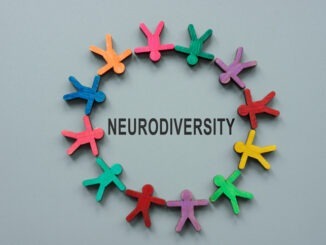As the world wakes up to the natural differences that are within all of us, schools and educators are thinking more frequently about how to provide learning environments that are inclusive to everyone. We dive into the world of neurodiversity and the important roles SBLs play in improving inclusivity
Neurodiversity is a big topic for anyone to get their heads around, but providing a learning environment that is correctly equipped and set up for all types of students is fast becoming a challenge, with budgets squeezed and less flexibility or scope for specialist staff.
The role of the SBL in helping teachers achieve neuro-inclusivity goals cannot be understated. Understanding the practical needs of neurodiverse pupils, knowing what practical aids and resources are available and making purchasing decisions to properly equip teachers to support students is yet another of the many strings to add to the SBL bow. But what sorts of things are we talking about here and how can SBLs work with staff in their schools to ensure the needs of neurodiverse students are met?
Understanding specialist equipment
In practical terms, pupils who are neurodiverse may require specific or specialist equipment to help them learn and to reach their maximum potential. SBLs should take steps to understand the products, technologies and services designed with conditions such as autism, ADHD, dyslexia, dyspraxia and more in mind. Knowing the products on the market, how they can benefit students and being able to trickle down information to department heads and teachers will be vastly beneficial to those setting up more inclusive spaces.
Once you have identified the different needs of the neurodiverse pupils in your school, SBLs can use the information gathered to help build tailored support based on the varying and diverse needs of each student. This may mean creating safe spaces, assessing room layouts to better understand sensory input or providing specialist tools to aid learning.
For example, Daniel Brook, founder and director of Neurodiversity Specialists, suggests providing equipment to channel focus and reduce distraction. Simon says, “Offering noise-cancelling headphones, or sensory-friendly spaces, can significantly enhance a student’s comfort and productivity.”
Creating the right environment
Creating an inclusive environment for neurodiverse persons doesn’t just mean providing for existing students. It can also extend to visitors to the school, staff and families. A valuable step towards improving inclusivity is for SBLs to conduct an analysis of each area of the school and consider how to improve inclusivity throughout. For example, how neurodiverse-friendly is your reception area or staff break-out space? These are commonly the first parts of the school a visitor or potential new employee will see.
According to research, getting people to speak up about their differences is often the biggest hurdle when trying to foster a more inclusive workspace. “It’s crucial to foster an inclusive culture where neurodivergent employees feel valued and empowered to contribute their unique perspectives,” Daniel added. “Neurodivergent employees have a wide range of needs, and to accommodate them better, employers must create an environment of understanding and flexibility.”
It seems clear that SBLs have a unique opportunity to be instrumental in helping both neurodiverse pupils and staff thrive from the start to the end of their school journey. But it must begin with having the correct setup and the right approach– and the best way to achieve this is by openly and authentically ensuring everyone is able to confidently communicate their needs.
This article is part one of three in a series focusing on neurodiversity in schools. The next article in the series will look at some of the more common conditions experienced by neurodiverse persons and the specific tools that can help facilitate an improved learning experience.




Be the first to comment